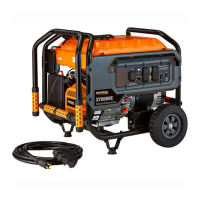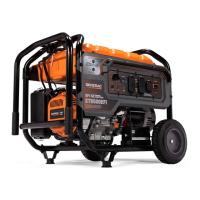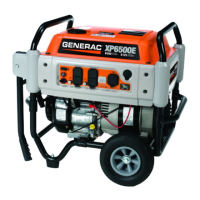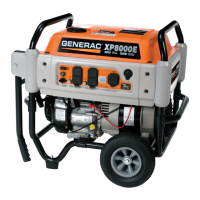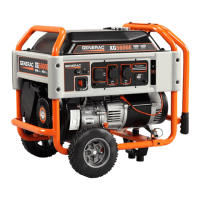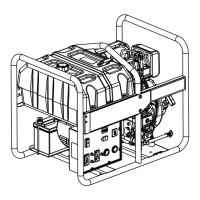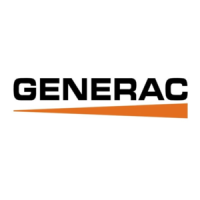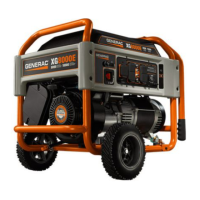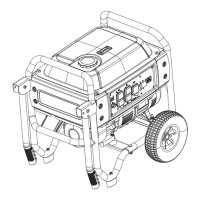12 Owner’s Manual for Portable Generator
Connecting the Generator to a
Building Electrical System
It is recommended to use a manual transfer
switch when connecting directly to a building
electrical system. Connecting a portable gen-
erator to a building electrical system must be
made in strict compliance with all national and
local electrical codes and laws, and be com-
pleted by a qualified electrician.
Connecting Electrical Loads
DO NOT connect 240 Volt loads to 120 Volt
receptacles. DO NOT connect 3-phase loads
to generator. DO NOT connect 50 Hz loads to
generator.
Let engine stabilize and warm up for a few
minutes after starting.
Plug in and turn on the desired 120 or 240 Volt
AC, single phase, 60 Hz electrical loads.
Add up the rated watts (or amps) of all loads
to be connected at one time. This total should
not be greater than (a) the rated wattage/
amperage capacity of the generator or (b) cir-
cuit breaker rating of the receptacle supplying
the power. See Know Generator Limits.
Know Generator Limits
Overloading a generator can result in damage
to the generator and connected electrical
devices. Observe the following to prevent
overload:
• Add up the total wattage of all electrical
devices to be connected at one time. This
total should NOT be greater than the gener-
ator's wattage capacity.
• The rated wattage of lights can be taken
from light bulbs. The rated wattage of tools,
appliances, and motors can be found on a
data label or decal affixed to the device.
• If the appliance, tool, or motor does not
give wattage, multiply volts times ampere
rating to determine watts (volts x amps =
watts).
• Some electric motors, such as induction
types, require about three times more watts
of power for starting than for running. This
surge of power lasts only a few seconds
when starting such motors. Make sure to
allow for high starting wattage when select-
ing electrical devices to connect to the gen-
erator:
1. Calculate the watts needed to start the
largest motor.
2. Add to that figure the running watts of all
other connected loads.
The Wattage Reference Guide is provided to
assist in determining how many items the gen-
erator can operate at one time.
NOTE: All figures are approximate. See data
label on appliance for wattage requirements.
Table 3. Wattage Reference Guide
Device Running
Watts
*Air Conditioner (12,000 Btu) 1700
*Air Conditioner (24,000 Btu) 3800
*Air Conditioner (40,000 Btu) 6000
Battery Charger (20 Amp) 500
Belt Sander (3") 1000
Chain Saw 1200
Circular Saw (6-1/2") 800 to 1000
*Clothes Dryer (Electric) 5750
*Clothes Dryer (Gas) 700
*Clothes Washer 1150
Coffee Maker 1750
*Compressor (1 HP) 2000
*Compressor (3/4 HP) 1800
*Compressor (1/2 HP) 1400
Curling Iron 700
*Dehumidifier 650
Disc Sander (9") 1200
Edge Trimmer 500
Electric Blanket 400
Electric Nail Gun 1200
Electric Range (per element) 1500
Electric Skillet 1250
*Freezer 700
*Furnace Fan (3/5 HP) 875
*Garage Door Opener 500 to 750
Hair Dryer 1200
Hand Drill 250 to 1100
Hedge Trimmer 450
Impact Wrench 500
Iron 1200
*Jet Pump 800
Lawn Mower 1200
Light Bulb 100
Microwave Oven 700 to 1000
*Milk Cooler 1100
Oil Burner on Furnace 300
Oil Fired Space Heater (140,000
Btu)
400
Oil Fired Space Heater (85,000 Btu) 225
Oil Fired Space Heater (30,000 Btu) 150
*Paint Sprayer, Airless (1/3 HP) 600
Paint Sprayer, Airless (hand-held) 150
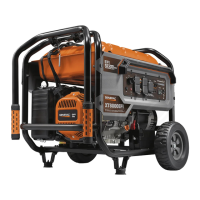
